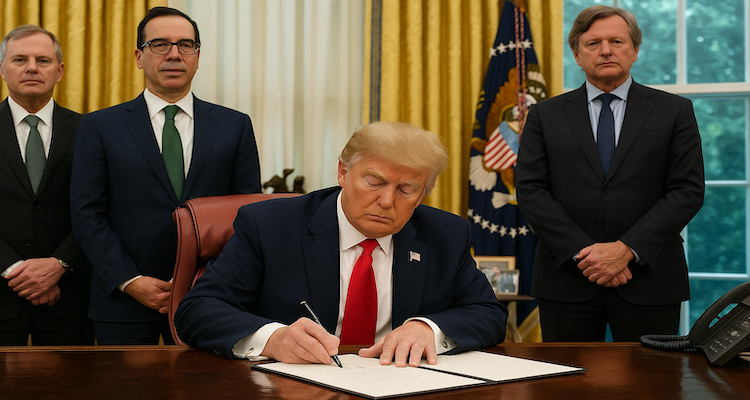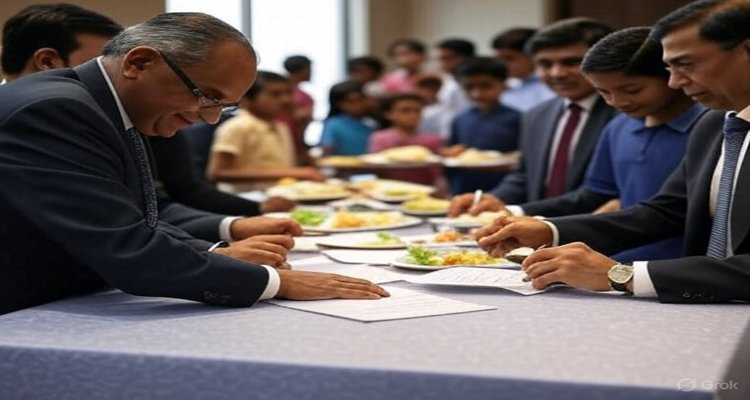India to Supply Fortified Rice to UN World Food Programme in Global Fight Against Hunger
India will supply fortified rice to the UN World Food Programme, boosting food security and nutrition for vulnerable populations worldwide.
Introduction
Hunger remains one of humanity’s most pressing challenges, and in many conflict-affected and disaster-prone regions, it often escalates into a humanitarian crisis. In a significant development, India has agreed to supply fortified rice to the United Nations World Food Programme (WFP) to support its mission of alleviating hunger and malnutrition in vulnerable communities across the globe. The agreement marks a strategic step in using India’s agricultural surplus to combat food insecurity and ensure nutritional resilience in crisis-hit regions.
Context & Background
The announcement came on August 25 in New Delhi, when a Letter of Intent (LoI) was signed between India’s Department of Food and Public Distribution (DFPD) and the WFP. Fortified rice, enriched with vital micronutrients such as iron, folic acid, and vitamin B12, is recognized as a cost-effective solution to combat malnutrition. By supplying this enhanced staple, India is positioning itself as a key partner in tackling the dual challenge of hunger and nutritional deficiencies.
The partnership builds on India’s role as a major agricultural surplus nation, capable of providing not just quantity but also quality food aid. For WFP, sourcing fortified rice from India ensures access to reliable supplies that can be distributed swiftly to populations affected by war, famine, or natural disasters.
Main Developments
The collaboration comes at a time when global hunger is at a critical juncture. According to the WFP, over 100 million people received food assistance in 2023, while the organization disbursed US$2.8 billion in cash-based transfers to support local food security. However, the growing frequency of conflicts, climate disasters, and economic instability has stretched resources thin.
By joining hands with WFP, India’s fortified rice initiative will:
- Strengthen food and nutritional security in vulnerable regions.
- Offer life-saving aid during emergencies such as droughts, floods, and conflicts.
- Reinforce the global push toward ending hunger and malnutrition, aligning with the UN Sustainable Development Goal (SDG) 2 – Zero Hunger.
The WFP’s operational reach is vast, with 5,000 trucks, 20 ships, and 80 aircraft delivering food daily in over 120 countries and territories. Integrating fortified rice into its supply chain enhances the nutritional quality of its assistance, making a tangible difference in health outcomes for millions.
Expert Insight & Public Reaction
Food security experts have praised the move as a “model of South-South cooperation”. By leveraging its agricultural strength, India is not only contributing to immediate hunger relief but also addressing the hidden hunger caused by micronutrient deficiencies.
Dr. Anita Sharma, a food policy analyst, notes:
“India’s decision to supply fortified rice to WFP is a milestone in global nutrition efforts. It demonstrates how surplus-producing countries can support international humanitarian needs without compromising their own domestic security.”
Public sentiment has also leaned positively, with many viewing the partnership as a reflection of India’s growing leadership role in humanitarian diplomacy.
Impact & Implications
The implications of this agreement are multi-dimensional:
- For Vulnerable Populations: Millions in conflict-affected and disaster-hit areas stand to benefit from improved food security and better nutrition.
- For WFP Operations: The partnership enhances WFP’s ability to deliver not just calories but also essential nutrients, particularly to children and pregnant women.
- For India: The move strengthens India’s position as a responsible global partner, reinforcing its humanitarian credentials while showcasing its ability to contribute meaningfully to multilateral initiatives.
- For Global Hunger Goals: With a funding requirement of $16.9 billion for 2025 to reach 123 million people, partnerships like this one are crucial for bridging resource gaps and ensuring sustainable solutions.
About the UN World Food Programme (WFP)
Founded in 1961 after a proposal by George McGovern, the WFP became a permanent UN program in 1965. Today, headquartered in Rome, it is the world’s largest humanitarian organization dedicated to fighting hunger.
Key highlights of WFP’s role include:
- Providing emergency assistance, relief, rehabilitation, and development aid.
- Working in conflict-affected countries, where undernourishment rates are three times higher.
- Partnering with 900+ NGOs to deliver food and address the root causes of hunger.
- Running the largest school-feeding program worldwide, active for over 50 years.
- Employing 23,000 staff members across 120+ countries.
- Funded entirely through voluntary donations, with 93.5% of government contributions directly supporting operations.
- Awarded the 2020 Nobel Peace Prize for combating hunger and preventing its use as a weapon of war.
Conclusion
India’s commitment to supply fortified rice to the WFP signals a strong message of global solidarity in the fight against hunger. As crises multiply due to conflicts and climate change, this partnership offers a pathway to deliver not just food but nutrition, resilience, and hope. By aligning with WFP’s mission, India reinforces the principle that combating hunger is not merely an act of charity but an investment in global peace and stability.
Disclaimer : This article is intended for informational purposes only and does not represent official policy statements of the Government of India or the UN World Food Programme.











